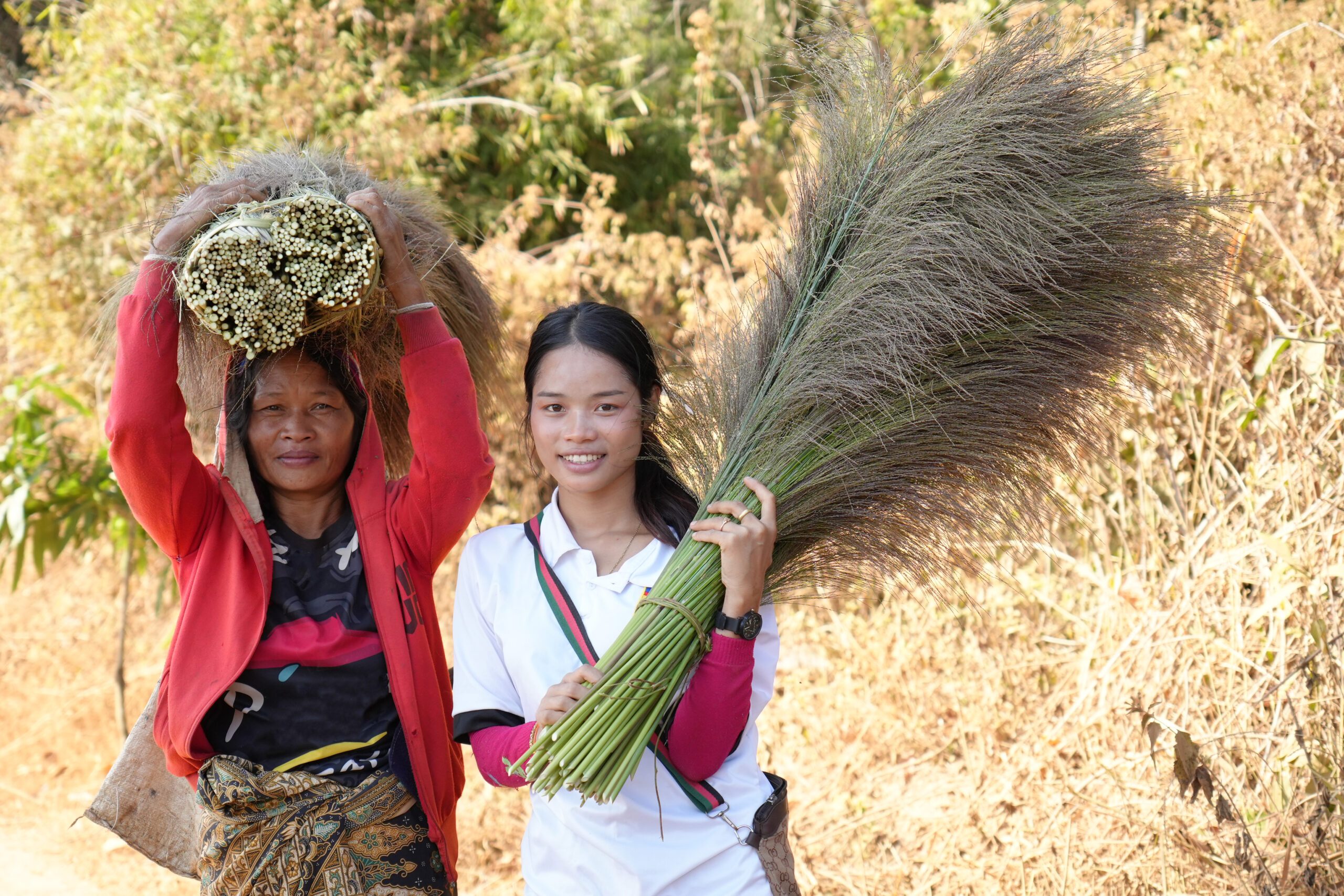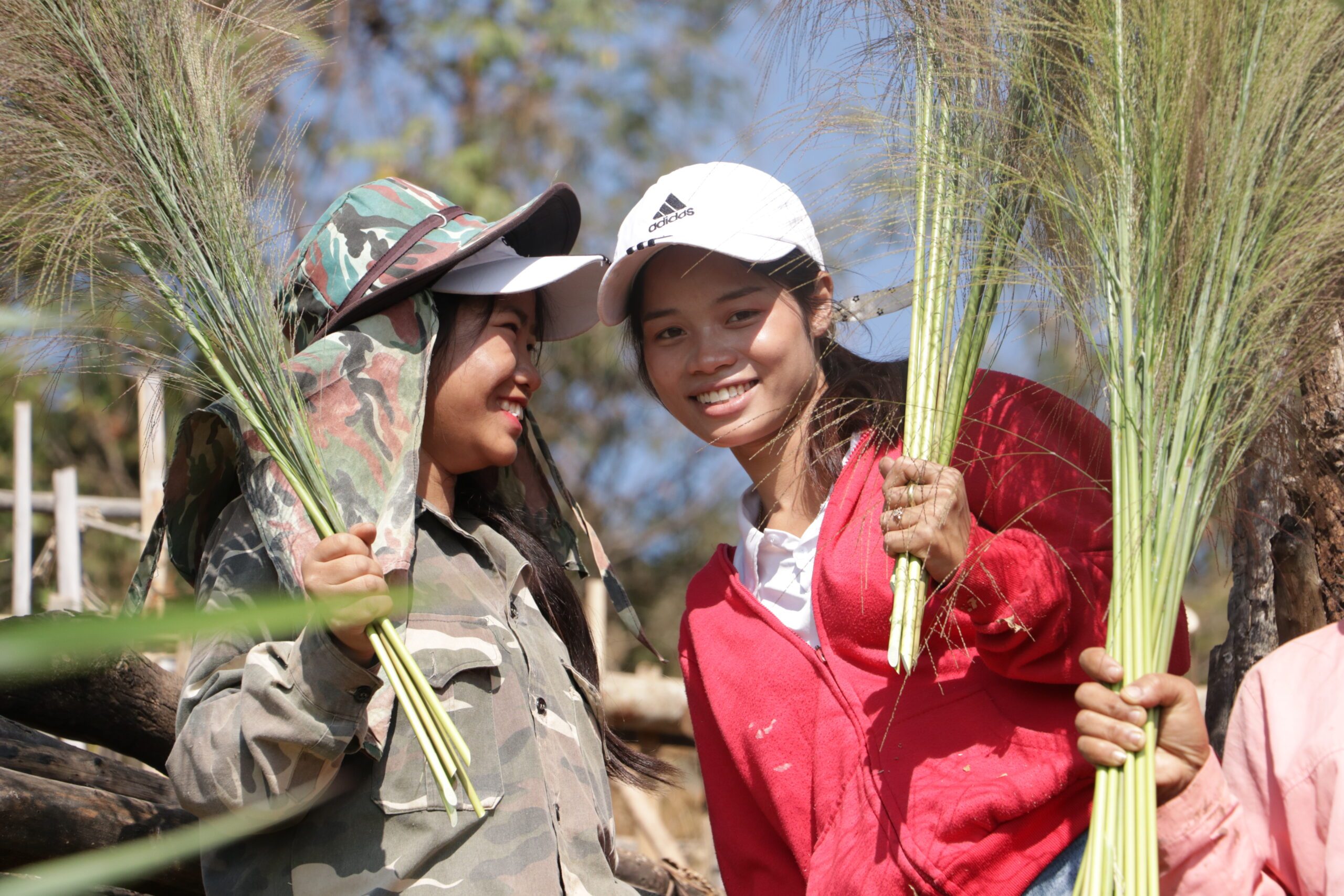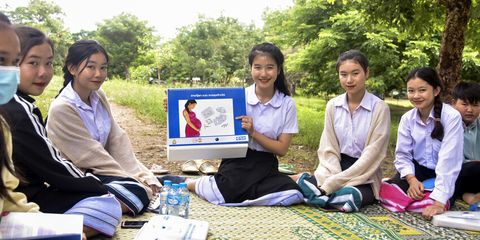Girls and women cultivate a sustainable and prosperous community
Dao and Vone are revolutionary broom grass cultivators in their rural community. With fellow female farmers they have brought the community together, boosted its economic prosperity and are creating a sustainable income for future generations.

Dao, is an 18-year-old adolescent girl whose journey began with a tough decision. Despite the aspirations she held for her education, financial constraints forced her to abandon her studies.
Returning home, she embraced her family’s agricultural traditions, determined to make the best of her circumstances. Cultivating broom grass became her new focus, a decision that would intertwine her fate with the land and her community in unexpected ways.
Like other community members in the rural communities in northern Laos, Dao and her family heavily rely on natural resources for their income generation, especially non-timber forest products, which continue to decline, impacted by climate change, deforestation and unsustainable harvesting practices.
Broom grass, or thysanolaena latifolia, is a native plant to many countries in Asia and the Pacific region, including Laos. Wild broom grass is one of the top 5 income-generation sources of non-timber forest products in northern Laos’s rural communities.
Broom grass flowers are main source of household income
Changes in climate and deforestation are causing a decline in the wild broom grass. This puts pressure on rural communities for whom the plant is their main source of income, forcing women like Dao and her mother Vone to search far and wide for the plant, often in dangerous circumstances.
“True fulfilment comes from the bonds we forge and the positive impact we create, all while earning a living.”
Dao
Dao and Vone’s days were long and rushed. They would get up around 5am and head to the forests to harvest wild broom grass flowers. “My daughter and I must get up early to harvest broom grass flowers; otherwise, we must walk far away to collect broom grass flowers. Sometimes, I walk for around 1 or 2 hours to the forest. I dare not go harvesting broom grass alone; I was afraid of strangers from other villages who are also looking for broom grasses,” shares Vone, the 27-year-old mother of 2 from northern Laos.
Often, they walk more than 2 kilometers on the hills through dense bushes, competing with others to find broom grass. This is then followed by the challenge of carrying the wild broom grass flowers home, on their backs or heads while walking up and down the steep hills.
Last year, Vone and her family harvested 400kg of wild broom grass flowers and earned 1,200,000 LAK (equivalent to 104.35 USD). Most of their time was spent walking to the forest, then loading broom grass flowers from the wild to take back home. However, this was not enough to earn a living.
Collaborative harvests build community bonds
To avoid the dangers for her and Dao of searching far and wide for broom grass flowers, Vone was very keen to improve the way broom grass was cultivated. She piloted a new scheme, planting broom grass on her piece of land with 300 seedlings and requested Dao, her daughter, to support on gardening.
Dao shared that, “Planting broom grasses and looking after them does not need much time and effort. At the beginning of planting seedlings, I needed to clear other weeds a few times to ensure the seedlings had space to grow.”
Other female villagers have since planted their own broom grass flowers and there are now multiple farms within the village.

The planted broom grass flowers all blossom at the same time. To ensure that all the villager’s broom grass flowers are harvested in time, the women in the village come together to help harvest each other’s plots. This builds a sense of community and ensures that everyone in the village can thrive.
Dao says, “True fulfilment comes from the bonds we forge and the positive impact we create, all while earning a living.”
For the first harvest Dao’s family produced 200kg of broom grass flowers from their plot and earned 1,100,000 LAK (equivalent to 68.75 USD). “Harvesting broom grass flowers in the plots is a fun time for me. Many people come to help each other at a time, and I have a good time socialising with my friends and cousin.”
Whilst planting broom grasses is yet to become the villagers’ primary income source, the local farms and plots are a sustainable and safe source of income for the villagers. Wild broom grass flowers are smaller than planted ones and weigh less. Harvesting the flowers from the plots saves them time and work and it tops up their incomes.
But they don’t plan to stop there. Dao explains her expansion plans, “I have consulted with the project staff and village authority about broom grass planting techniques. I will start planting more broom grasses next season so that I can take care of my parents and earn money at the same time.”
Dao’s village is a beacon of sustainable prosperity
In the heart of northern Laos, the rural village where Dao and Kone live is emerging as a testament to the success of sustainable income generation. Last year, the village earned over 43,000,00 LAK from non-timber forest products, with broom grass ranking among the top 5 income generators.
Cash crops like rice berries and job’s tears were supplemented by the promising growth of broom grass cultivation, anticipated to become the third highest earning cash crop in the future.
Plan International Laos and Meaying Houamchai Phatthana Association are working with authorities to empower adolescents and young women on broom grass plantations in 12 villages. The project provides support for farmers to get their planted broom grass plots registered and ensure a trade-free condition for all farmers. The registration means planted broom grass flowers can be sold at a higher price and to any traders. Selling wild broom grass then becomes income villagers use to cover their children’s schooling, medical treatment, and extra household expenses.
Categories: Skills and work


